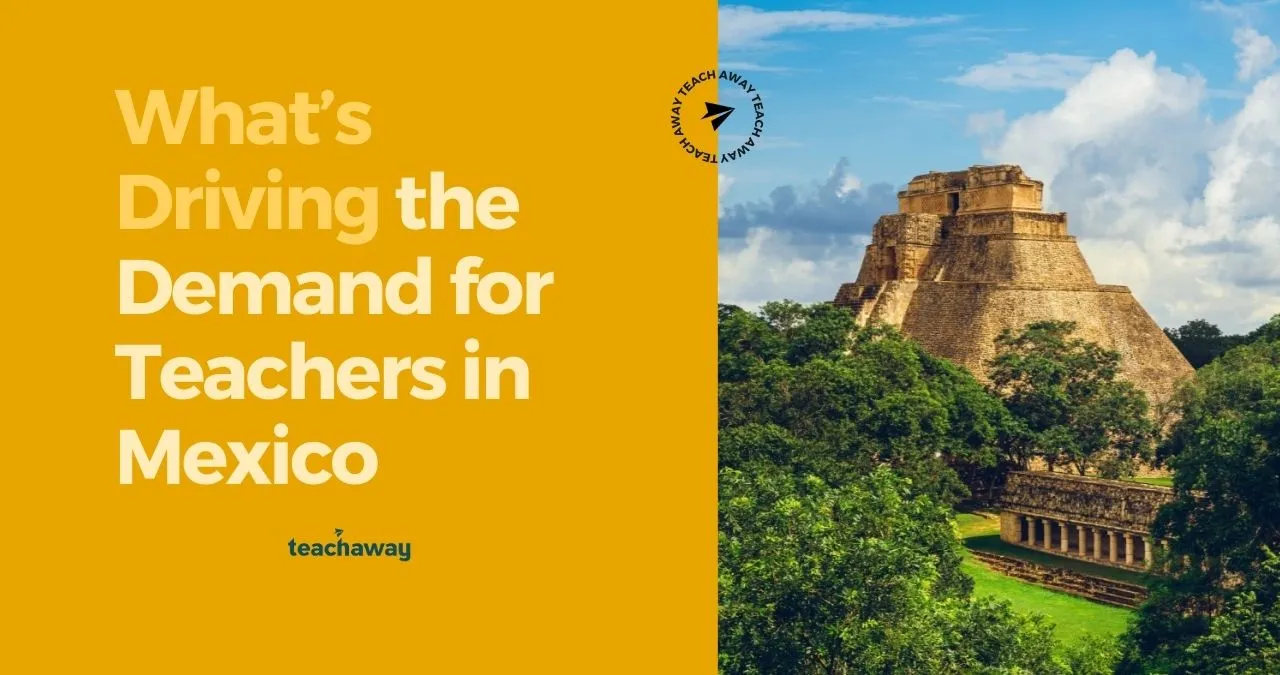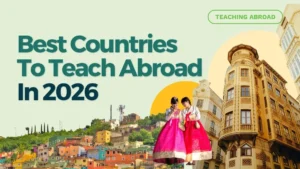Mexico’s emerging middle-class: the socio-economic factors that are helping to raise the profile of international schools across Mexico
Mexico has for a long time been a popular destination for international educators looking for their next job placement; rich culture, great food and beaches; along with a low cost of living make Mexico highly desirable for teachers in the international school eco-system.
Though traditionally, a lot of these opportunities were ESL or TEFL type jobs in language centers, or in international schools that want long-term commitments.
Amongst an increasingly competitive global international school market since the early 2000’s, Mexican private schools have had to compete for the best teachers with the likes of the Middle East and China, who, by comparison, offer expatriate teachers salary packets often quadruple that of Mexican and Central American schools.
Though, with a growing economy and the emergence of a new middle class in Mexico, international schools are prospering, granting greater investment opportunities in private education and a resulting demand for international teachers.
The emerging middle-class
In Mexico almost half the population of 127 million meets the definition of middle class. With an increasing GDP per capita, more pressure has been placed on the government for greater provision for education.
Aspiring types tend to press governments to provide better services such as health care and education, because they rely on them more than the rich, who can buy what they need. Rather concerningly, Mexico ranked 56th of 78 countries in the most recent PISA ranking, a test of 15-year-olds’ skills in Science, Maths and Reading.
Almost no students in Mexico were top performers in Mathematics and Science. It is no surprise that many Mexican parents that can afford to, are considering private education as an alternative.
The subset to this is a greater demand for international teachers to fill the space created by greater student populations in fee-paying international schools.
Urbanization has also played a crucial role, with a growing number of Mexicans migrating from rural areas to cities in search of better opportunities. This urban migration has contributed to the concentration of the middle class in urban centers, where the number of international schools is enormous. Most notable of all of course, is the capital, Mexico City.
A whole host of different types of schools are present there; American, British, IB, Catholic and Montessori schools can be found in most districts of the city. Mexico City is looking more international year on year.
The process of globalization has opened up new opportunities for individuals from diverse backgrounds to access information, technology, and global markets.
This increased connectivity has enabled many Mexicans to engage in entrepreneurial endeavors, thus contributing to the expansion of the middle class. Amongst this desire to grow, more Mexican students are enrolling into university than ever before.
Whilst Canada and Australia had experienced steady growth, the US seeing a steady decline at undergraduate level and UK maintaining fairly flat enrolments since 2011, the enrolment of Mexican students in English-speaking colleges and universities is booming.
Companies like Blue Ivy exist to help LATAM students through the application process, training, and scholarship assistance to access Ivy League colleges.
Ultimately, the desire of young Mexicans to go to university only increases the appetite for parents to send their children to private schools during their elementary and secondary years.
A growing expatriate population
The growth of international school student numbers has not been fuelled by domestic students alone. Greater investment from foreign firms generates incumbent expats of whom would naturally be looking to send their children to fee-paying international schools.
Americans form a large percentage of such communities, not least because of the geographical proximity of Mexico to the US, but also the special relations between the two countries under the North American Free Trade Agreement (NAFTA).
Moreover, with the ever growing decline in Chinese-American relations, Mexico provides the US an effective alternative to China in manufacturing and service industries. Setting up in Mexico is cheaper and more desirable, as wages and geo-politcal issues in China hit all-time highs.
The same can be said about China, with a heightened interest in Mexico after Trump raised tariffs on imports from China in 2018 (note that Biden has kept the tariffs in place during his tenure).
Chinese investments have been pouring into Mexico; companies such as Huawei and Didi have set up offices there. Traditionally, Mexico had no real lure for China as a way into America, prior to the US turning its back on Chinese companies.
Now China gets a back door into America because Mexico is part of a free-trade agreement with the United States and Canada. Ironically, Mexico has also benefited in the export market, when in the past they would always lose out to Chinese competition.
In September Mexico overtook China for the first time since the early 2000s in becoming the leading exporter of goods to the United States.
As a sub-set to all these geo-political measures and movements, Mexico can be said to have been a net-benefactor, certainly economically.
Whilst questions may arise as to the infrastructure and social conditions, Mexicans are getting wealthier, and expatriates with deep pockets are choosing to move to there. Those expatriates with offspring need to send their children somewhere, and it clearly won’t be to underperforming state schools.
Average school fees range from $300 to $2,000 per month for the top-tier institutions, which when compared to the private school fees of other parts of the world, is significantly less expensive.
Life as an international teacher in Mexico
There are many reasons why an educator would be interested in moving to and teaching in Mexican schools. But, unfortunately, there have traditionally been many push factors too, that have prevented Mexico attracting more of the best talent.
In an ever competitive market, where international teachers could have job offers from dozens of schools across the globe, it’s the small push factors that ultimately result in certain teachers deciding not to move to a particular country over another.
In the Middle East right now, some candidates may be put off from moving due to the war in Gaza; even if it means turning down tax free salaries in the booming cities of Riyadh and Dubai.
China has had a massive fall in interest, partly self-imposing when the government curtailed private education companies in 2021, but also of course because of the Covid pandemic.
Safety concerns rank highly in the minds of many expats when deciding which country to move to, and in respect of Mexico, it is the safety aspect that hits the hardest.
Though it is important to note that a significant proportion of the troubles in Mexico are endemic in particular cities and states, and quite often, it’s those areas where you do not find a high concentration of international schools that have the most problems.
Places like Mexico City, Guadalajara, and Monterrey, which all have a high number of international schools, are relatively safe when compared to other cities frequented by international teachers globally.
Yucatán, the safest state in Mexico, has about the same homicide rate as Finland (one of the lowest in the world).
A bright future?
Teach Away works with schools across the globe, and receives over 60,000 applications a month on their job board. Mexico ranks in the top five destinations in terms of the number of applications annually. Clearly, Mexico stands proud as a top destination in the minds of many international educators.
An optimist outlook would have high hopes for Mexico at a general level. Economic growth aside, Mexico is gradually becoming not only high up on a teacher’s shortlist to work for a few years, but indeed to reside long-term.
Covid and the resulting “digital nomad” age saw thousands of international millennials flooding to places like Mexico City in search of cheaper living costs whilst still earning their American or European salary.
This helped local economies stay afloat in a time when Mexico faced its biggest recession in years.
With expats flooding to restaurants, bars, and renting apartments in the affluent areas of Polanco and Roma Norte, these areas are now seen as amongst the top in the world for expatriates, ‘tech-guys’, digital nomads, and of course, educators.
Later this year, in June, Claudia Sheinbaum will most likely become Mexico’s first female president.
Not only symbolic in demonstrating, at least on a surface level, Mexico’s drive towards gender equality; perhaps more notably she would also be its first leader with a Jewish background.
In a country that’s home to nearly 100 million Catholics, it will be a huge show of modernization, the kind that will help Mexico to be seen to be an open and progressive place to live.



